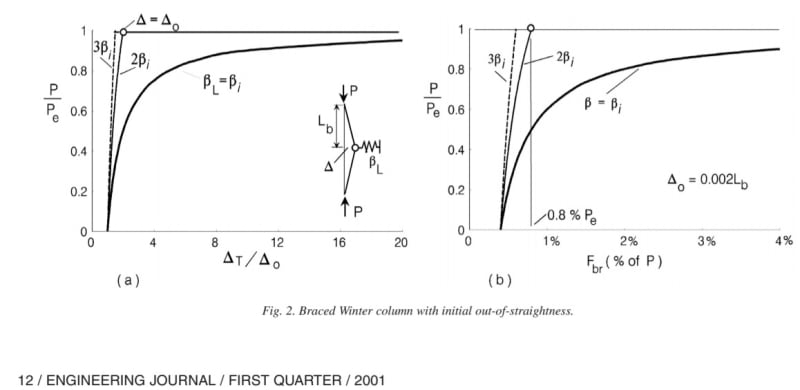li0ngalahad
Structural
Hi everyone,
If we need to design a welded column, subject to axial load, how do we determine the design loads for the welds connecting the flanges to the web?
I know for a beam that is subject to shear and bending moment, the weld is designed using the shear flow, f=VQ/I, and it's easy enough to find the design load for the weld as I usually have a clearly defined shear V*, or in alternative, we can just design the weld based on the web's full shear capacity. However, for a column that is not subject to significant shears, doing so would be overly conservative.
So my question is, how would we approach this when we do not have a clear shear force to design to? One idea I have is to design the weld based on 2.5% of each flange plate section capacity in compression, making sure I develop enough force to prevent its out-of-plane buckling - for example, if my flange plate has a section capacity of 1000 kN and a maximum unrestrained height of 300mm before the plate "member" capacity starts being influenced by buckling and becomes lower than the section capacity, I design a weld that can take 250 kN every 300mm of length, for example, 2 x 6CFW SP 125/175 HIT/MISS.
I would do this for both flanges and also for the web (although the web will rarely govern the design as it will have double welds and it has usually a smaller section area than the flanges)
Any thoughts on this? Is there any code provision taht can help with this (could not find any)?
Thanks
If we need to design a welded column, subject to axial load, how do we determine the design loads for the welds connecting the flanges to the web?
I know for a beam that is subject to shear and bending moment, the weld is designed using the shear flow, f=VQ/I, and it's easy enough to find the design load for the weld as I usually have a clearly defined shear V*, or in alternative, we can just design the weld based on the web's full shear capacity. However, for a column that is not subject to significant shears, doing so would be overly conservative.
So my question is, how would we approach this when we do not have a clear shear force to design to? One idea I have is to design the weld based on 2.5% of each flange plate section capacity in compression, making sure I develop enough force to prevent its out-of-plane buckling - for example, if my flange plate has a section capacity of 1000 kN and a maximum unrestrained height of 300mm before the plate "member" capacity starts being influenced by buckling and becomes lower than the section capacity, I design a weld that can take 250 kN every 300mm of length, for example, 2 x 6CFW SP 125/175 HIT/MISS.
I would do this for both flanges and also for the web (although the web will rarely govern the design as it will have double welds and it has usually a smaller section area than the flanges)
Any thoughts on this? Is there any code provision taht can help with this (could not find any)?
Thanks


